Autumn South AGS Show, 2014
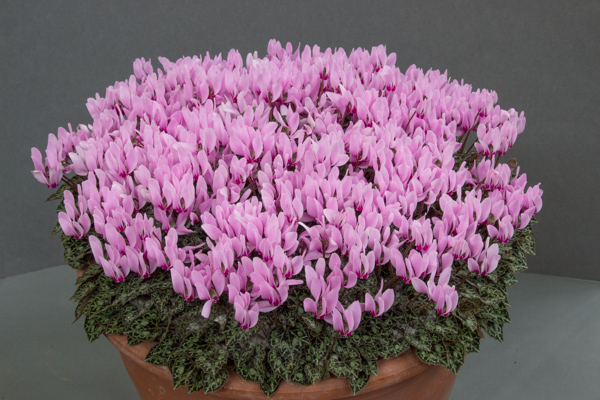
Given the record-breaking warm, dry September most of the country had been enjoying, I admit to having my doubts about whether the Autumn South Show would maintain its usual high standard. Many of the plants you would normally expect to see at the autumn shows had already done their thing for this season. I need not have worried however, as upon arrival at the hall it was clear that the seasoned (some more seasoned than others!) growers of the AGS had risen to the occasion again and the hall was temporary home to some superb plants. In particular the Cyclamen growers within the Society were out in force. An entire bench was filled almost exclusively with huge pots of this popular genus. Ian Robertson – renowned for his prowess when it comes to growing a wide range of the genus – won both the Saunders Award for best Cyclamen and the Farrer Medal for his particularly impressive Cyclamen graecum subsp. anatolicum.
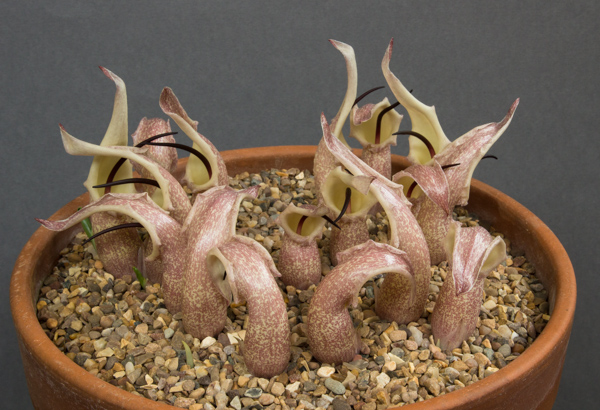
Biarums are favourites of mine and there were a number on display. The ‘hood’ of B. marmarisense is mottled with purple/brown spots in varying degrees. Michael Chadwick received a Certificate of Merit for his almost pure-purple pan [left]. In the same class Bob and Rannveig Wallis exhibited a lesser-spotted but equally delightful version [below]. Originally considered a sub-species of B. davisii, a population in south-western Turkey was elevated to specific species status some years ago.
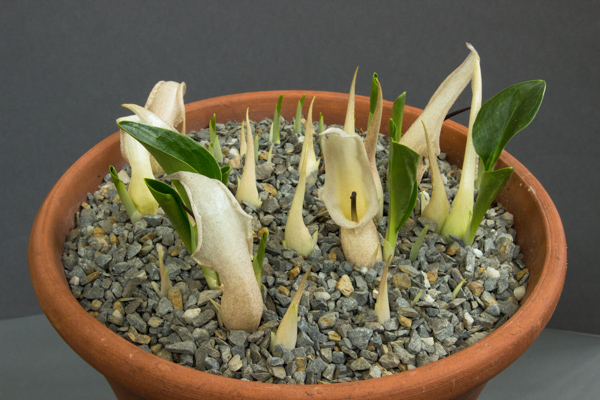
Unlike other members of the Araceae it is safe to inhale in the vicinity of B. marmarisense as, rather than emitting the odour of something you would use to fertilise the garden, it has a pleasant scent. This is a relatively easy bulb to flower in the autumn and can also be successfully grown in the garden. I have several well-established clumps in a south-facing scree bed in Bedfordshire.
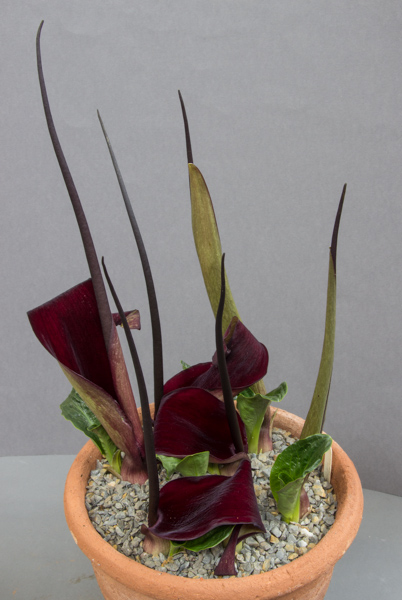
Next door, Bob and Rannveig exhibited B. pyrami, another native of Turkey, as a component of a three-pan class, the other plants being Colchicum baytoporium and Empodium flexile. The rich deep red colour of this much larger Biarum (two, perhaps even three times the height of B. marmarisense) made it one of the most eye-catching plants on display. Those of us unfortunate enough to be stewarding that class ‘enjoyed’ the full force of its less-than-pleasing scent! In the small pan class there was the more diminutive but equally pungent B. bovei, brought along by the same exhibitors. What the drive over from Carmarthenshire must have been like doesn’t bear contemplating!
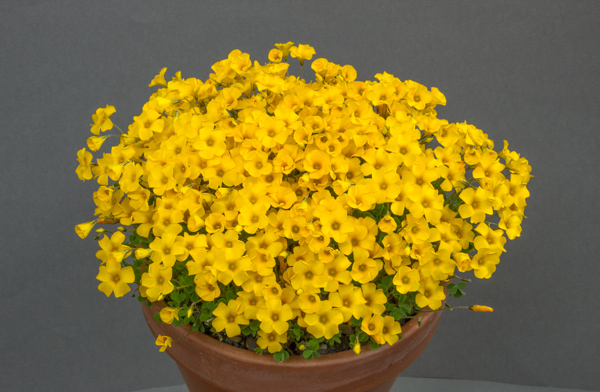
A final plant I would like to mention that made the long journey over from Carmarthen is Oxalis lobata. The bright yellow flowers of this plant bring some welcome sunshine into alpine houses as the evenings start to draw in. One of the advantages of the unusually prolonged summer conditions is that it is much easier to enjoy plants such as this South American, for the warmer weather encourages the flowers to open.
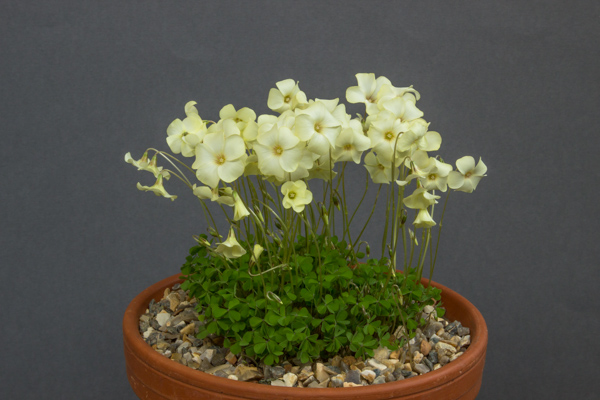
Elsewhere in the hall Don Peace exhibited the equally bright, but this time predominately orange, South African O. massoniana. The Oxalis I went out and tracked down in the plant stalls however was the less intense but nonetheless attractive O. perdicaria ‘Cetrino’ [left], one of many prize-winning plants to come out of the back of Cecilia Coller’s famous van.
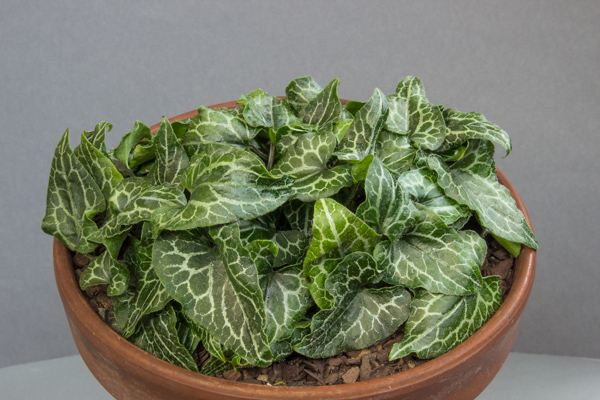
Another plant that emerged from that vehicle was Asarum ‘Takasago Saishin’. The brown flowers of this plant are not as impressive as those of some other members of this genus, but it is worth growing for its foliage alone. The heart-shaped, dark green leaves, not dissimilar in shape to some forms of Cyclamen hederifolium, are highlighted with silver markings. In my view the foliage of certain asarums can be just as attractive, if not more so, than that of many Cyclamen, and A. ‘Takasago Saishin’ supports this no doubt controversial statement!
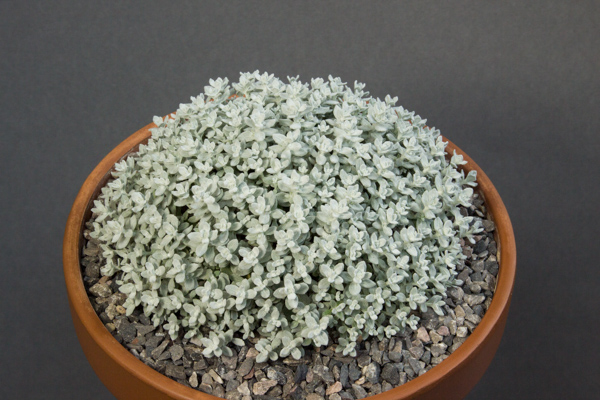
Staying with foliage plants for the moment, Lee and Julie Martin received a first for a very well grown Veronica bombycina. Unlike some plants entered in the classes for grey and silver foliage, which leave judges umming and ahhing (and dare I say complaining!), there can be no doubting this plant’s silver-credentials.
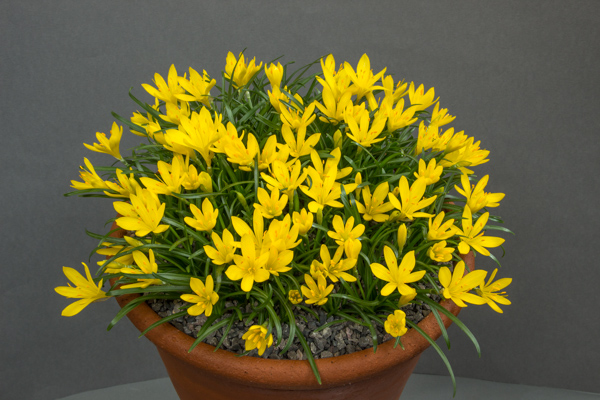
Lee and Julie also found success with a large pan Sternbergia greuteriana. Each of the countless flowers was in flawless condition and the Martins went away with a well-deserved Certificate of Merit. The third Certificate of Merit awarded at this show went to Cheilanthes yatskievychiana grown Tim Lever, who had met with similar success with the same fern at Autumn North the week before.
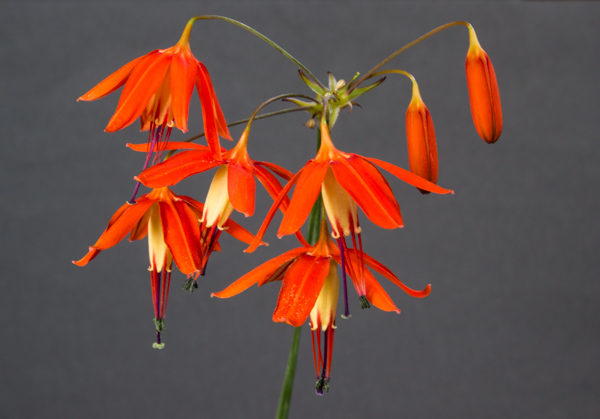
In the Intermediate Section Jon Evans once again delighted the public with the Central American Bessera elegans. Like a number of other arguably hardy bulbous plants, keeping it completely dry from around mid-autumn onwards is one of the keys to success. If successfully grown, not only are you rewarded with bright red flowers on stems of anything over 30cm (12 inches) but the interior reveals a red stripe on a cream background.
It is thanks to Jon that the Artistic Sections at our shows have undergone a renaissance. Up and down the country entries are going up in both quantity and quality. One of the people responsible for setting up the ever-growing competition at this show commented that if entries were to continue to increase they will not have the boards to display the exhibits. As problems go, there are worse ones!
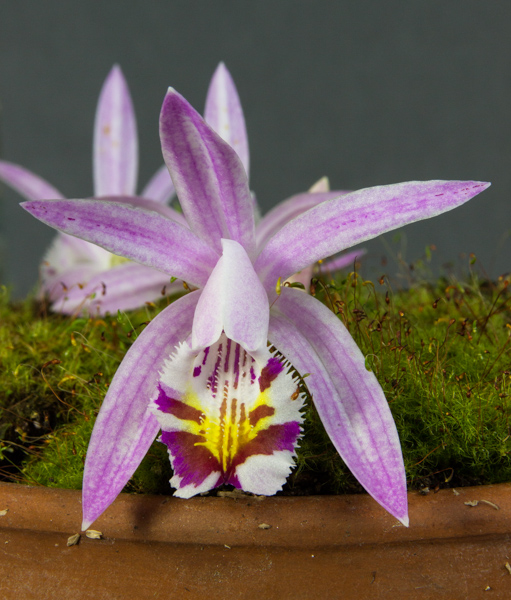
For me the most interesting plant on display was Ian Robertson’s Pleione Confirmation gx. This particular plant was crossed in cultivation, but the two parents, P. praecox and P. maculata, both of which ordinarily flower much later in the winter, occur in close proximity to each other in the wild. The pink colour of the petals is that of P. praecox, but the markings of the lips of the flowers is inherited from P. maculata. Examples of this cross that occur naturally are categorised as P. x lagenaria, and have a ground colour of any shade between white and palish mauve: why cultivated examples are differently branded does not convince everybody. The exhibitor obtained his stock from Simon Pugh-Jones, whose pioneering work at his Somerset school has produced a succession of knowledgeable young orchidologists.
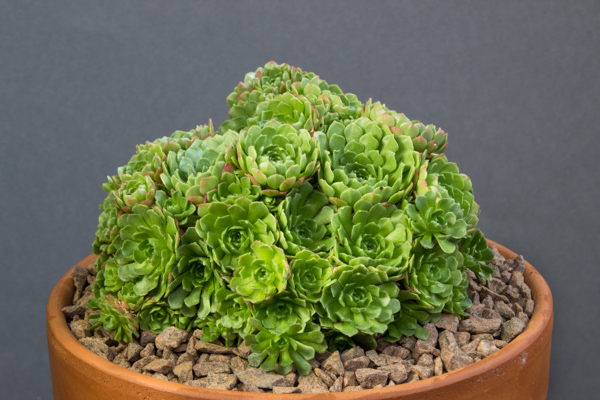
Two up and coming exhibitors to keep an eye on are David and Liz Livermore. Their Rosularia aizoon was in my opinion the pick of the plants in the encouragingly-strongly entered Novice Section. This member of the Crassulaceae is readily available and easy to grow in any gritty well-drained soil. The fact it also increases in size much more rapidly than its cousins – the sempervivums and jovibarbas – means it should be happily at home in a 36cm pan, ready for when the Livermores take the plunge and enter the Open Section.
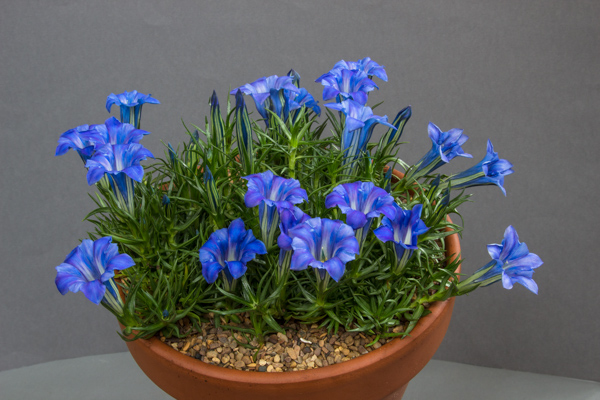
Unusually for this show there was only one gentian on display: Anne Vale’s G. sino ornata hybrid. Anne grows her gentians in an acid bed consisting of cocoa shell (substituted with a small amount of peat when cocoa shell cannot be obtained), composted bark and leaf-mould, topdressed with more composted bark. Originally she grew only G. sino-ornata, but after planting G. ‘Blue Silk’ in the bed a few years ago she now has a range of blues in the autumn. Cuttings are taken in the summer and are left in part-shade outside until the flowers begin to open. As they do so, the plants are taken undercover to prevent the rain marks that have stolen away many red stickers over the years.
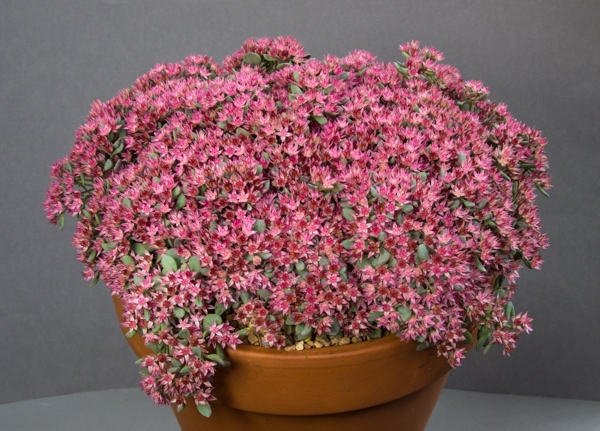
Another offering from the same exhibitor was the aptly named Sedum spurium ‘Rose Carpet’, which would normally be found on her rockery. A severe cutting back in the spring was deemed necessary as the spring rain had caused it to go ‘black and mushy’ in the middle. This definitely did the trick and the much tighter plant that resulted, covered in pink star-shaped flowers, received a first prize – proof that winning at AGS shows is sometimes as much about luck as it is careful planning!
Author: Robert Amos
Photographer: Jon Evans
